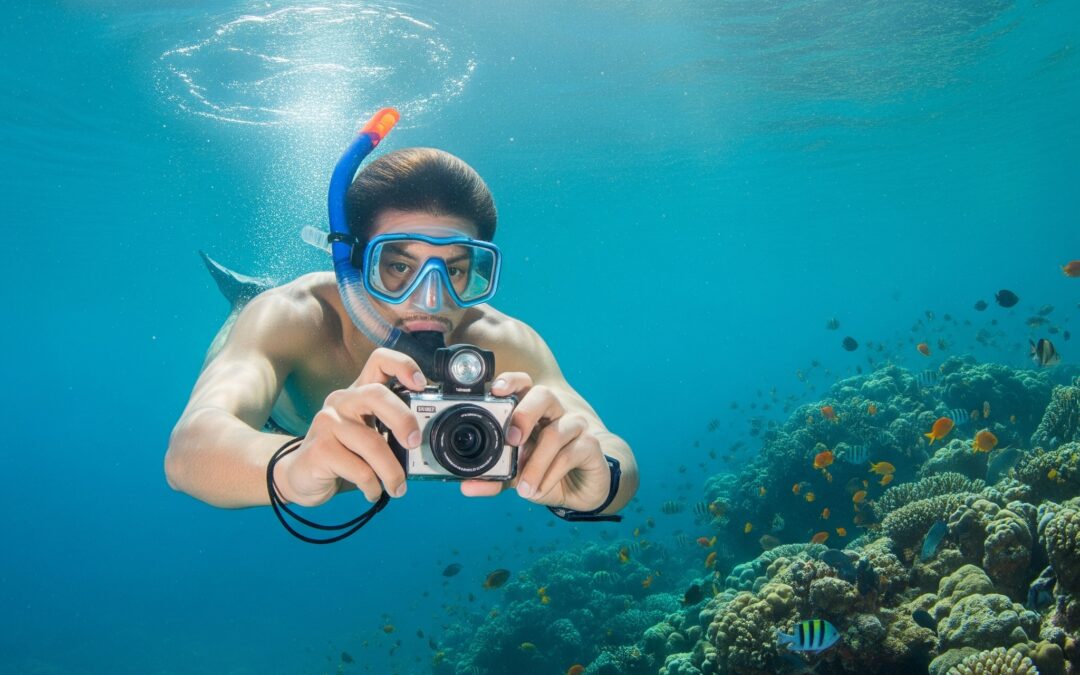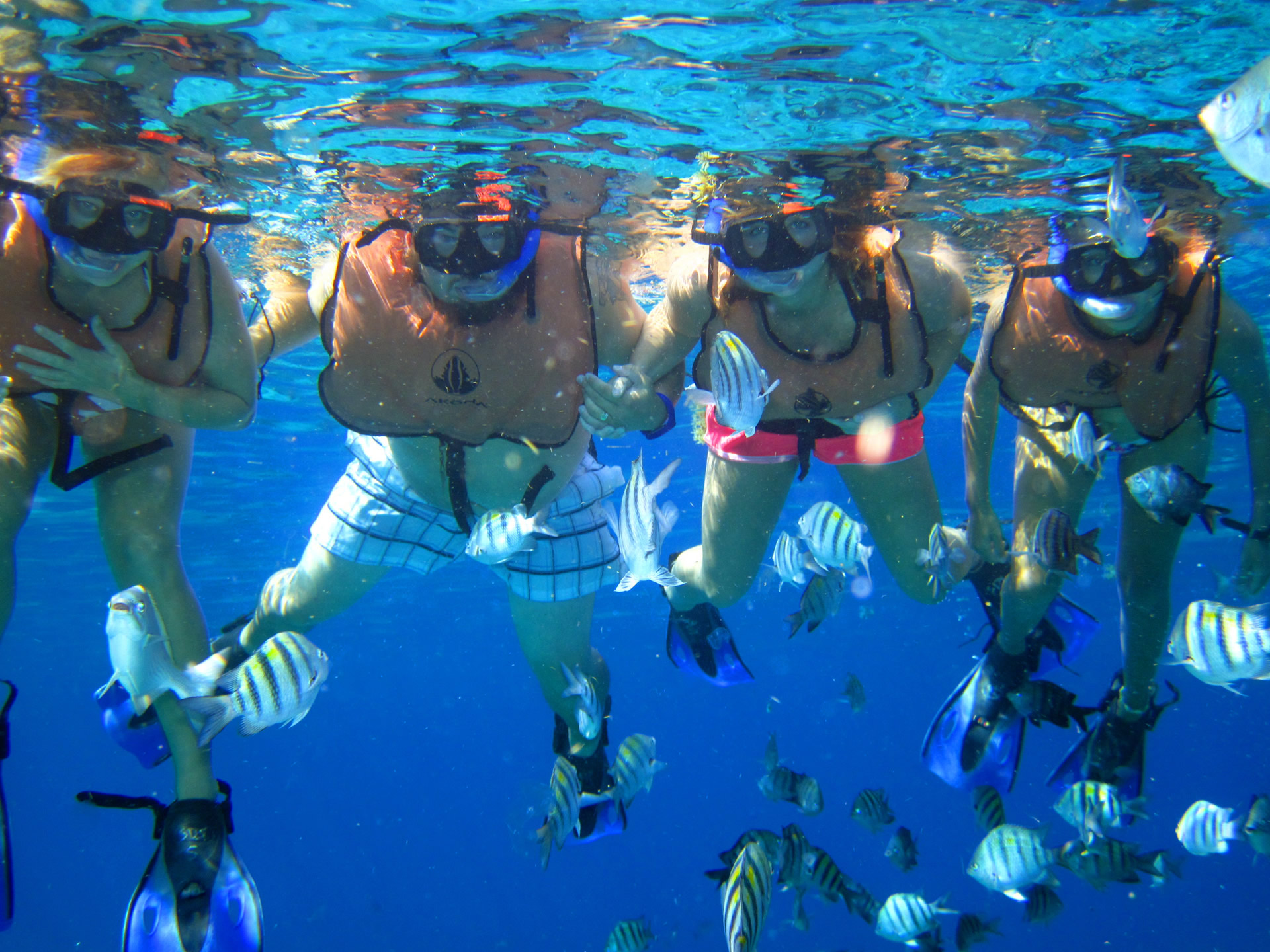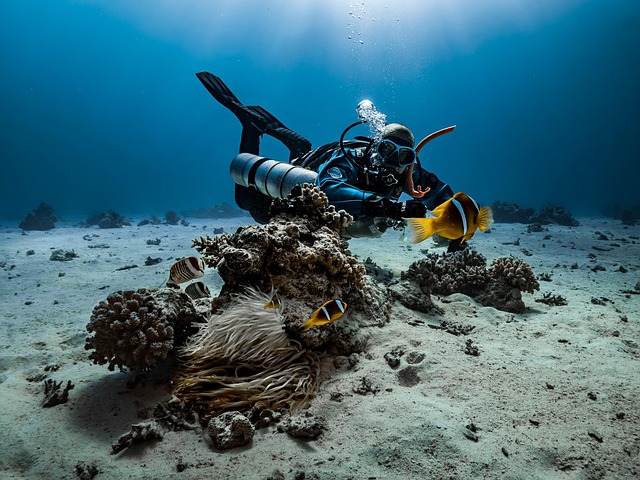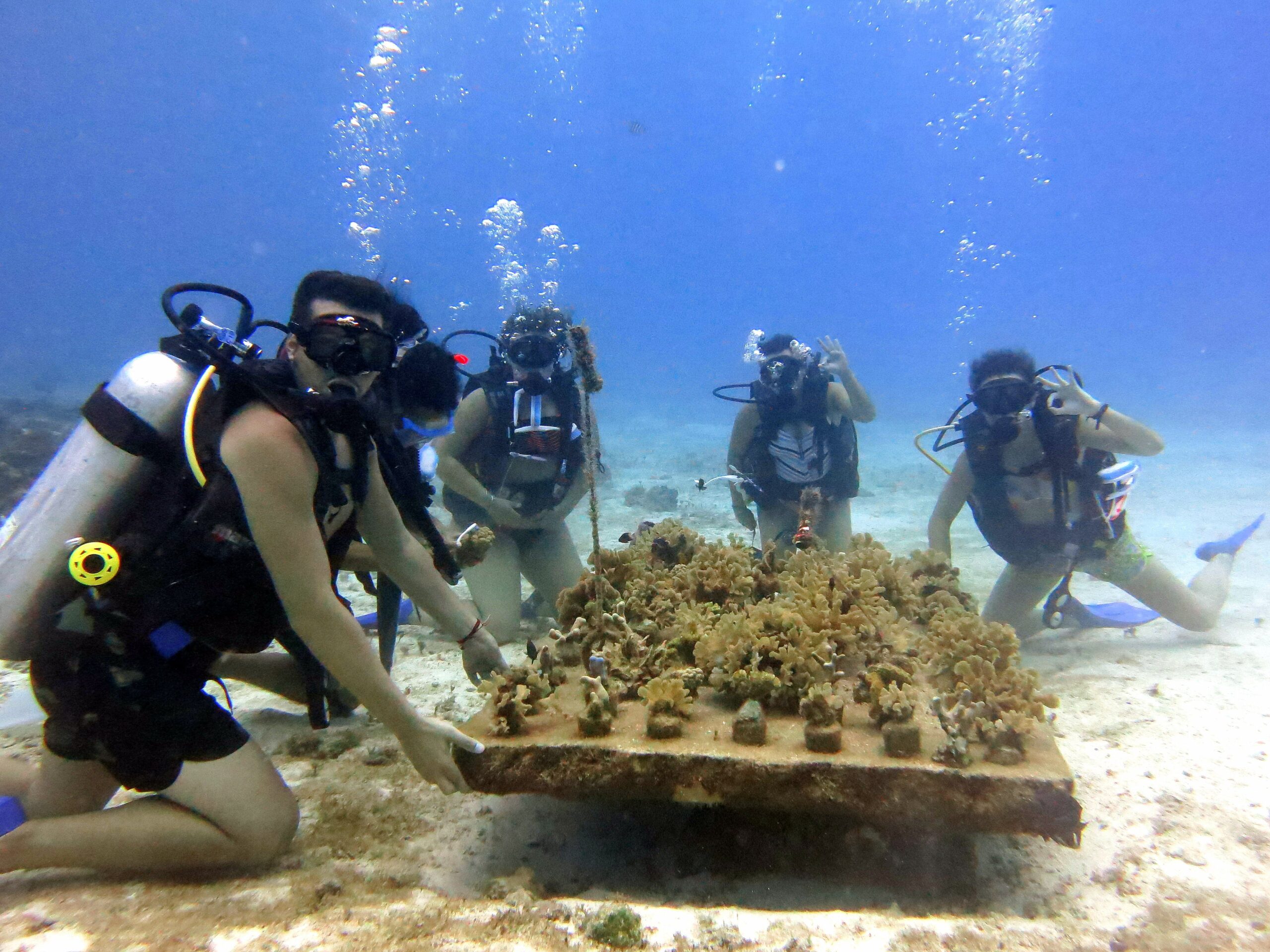Underwater Photography Tips for Snorkeling Beginners
Capture stunning underwater shots in Cozumel or anywhere! Learn snorkeling photography tips, best cameras, and pro hacks for crystal-clear photos.
Imagine gliding through turquoise waters, schools of colorful fish darting past, sunlight streaming through the waves — and you reaching for your camera… only to find your photos turn out blurry, too dark, or washed out.
If you’ve ever struggled to capture the magic of snorkeling on camera, you’re not alone.
Underwater photography is different from shooting on land — water bends light, colors fade, and motion happens in every direction.
The good news?
With the right techniques and gear, you can capture photos that look like they belong on a National Geographic cover.
Whether you’re a beginner with a GoPro or upgrading to a waterproof camera, these underwater photography tips will help you take breathtaking snorkeling shots you’ll be proud to share.
Why Snorkeling Photos Often Disappoint (and How to Fix Them)
Before diving into camera settings and gear, let’s address the challenges that make underwater photos tricky:
-
Color loss – Red and orange hues disappear quickly underwater, making images look too blue or green.
-
Light distortion – Water bends light differently than air, often causing blur or warping.
-
Movement everywhere – You, the fish, and even the water itself are always in motion.
-
Limited visibility – Suspended particles (called “backscatter”) can make photos look cloudy.
💡 Fix it fast: Use natural light from above, stay shallow (5–10 feet), and shoot at a downward angle for clarity and contrast.
Is snorkeling good for photography?
“Snorkeling offers a unique opportunity to capture the beauty of the underwater world without the need for specialized diving equipment. Snorkeling is a great way to get into underwater photography”
Best Camera for Snorkeling & Underwater Shots
When choosing the best camera for snorkeling, you don’t always need a professional DSLR. The right waterproof camera depends on your goals:
📸 Top Picks for Snorkeling Cameras:
-
GoPro HERO12 Black – Best action cam for beginners; compact, wide-angle, great for video.
-
Olympus Tough TG-6 – Popular choice for snorkeling photography; RAW format, macro mode.
-
Sony RX100 VII (with underwater housing) – Advanced option for pros wanting DSLR-quality shots.
-
Waterproof phone cases – Affordable entry point, but be cautious of leaks.
🔑 Pro Tip: Always test your camera or case in shallow water before heading out deeper.
How do you take good pictures snorkeling?
“Taking great snorkeling pictures involves a few key techniques: stay close to the surface for better light, get close to your subjects to reduce blur, keep a steady hand to avoid motion blur, and use natural light to your advantage. Good composition and post-processing are also essential for creating stunning underwater photos.”
Shooting Techniques for Stunning Underwater Photos
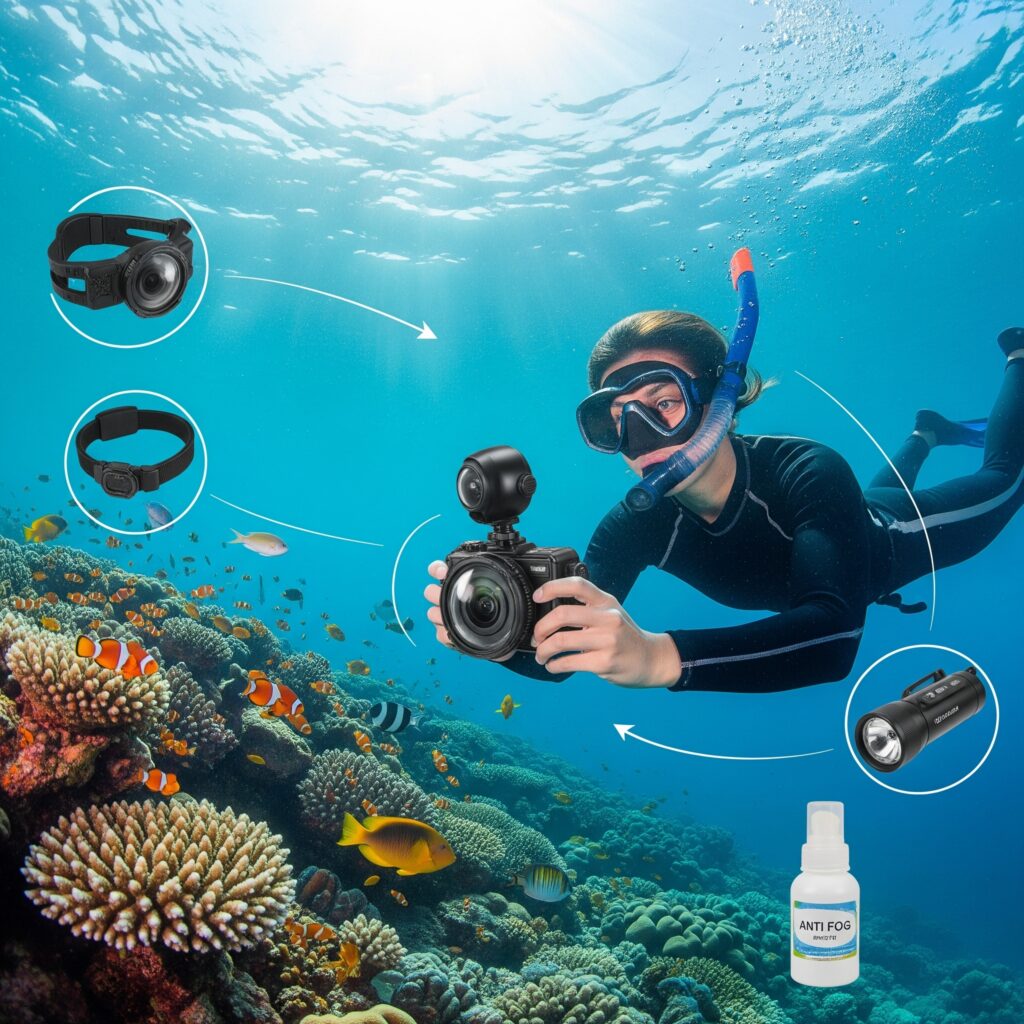
Taking great snorkeling shots isn’t just about having the right camera — it’s about how you use it. Here are the most effective underwater photography tips to instantly improve your photos:
Use Natural Light to Your Advantage
-
Stay close to the surface (5–10 feet) where sunlight penetrates best.
-
Shoot in the morning or early afternoon for brighter, warmer tones.
-
Position yourself with the sun behind you so subjects are naturally illuminated.
💡 Why it matters: Artificial flash underwater often creates backscatter. Natural light keeps your photos sharp and vibrant.
What settings should I use for underwater photography?
“While specific settings depend on your camera and the conditions, a good starting point for underwater photography is to use aperture priority mode (Av or A), set your aperture to f/5.6 or f/8 for good depth of field, and let the camera choose the shutter speed. Increase ISO if needed, but try to keep it as low as possible to minimize noise. For video, shoot at 30fps or 60fps for smoother motion.”
Get Close, Then Get Closer
-
Water reduces sharpness — the closer you are, the clearer the shot.
-
Aim to be within 3–6 feet of your subject.
-
Avoid zooming — it increases blur and distortion.
📌 Pro Tip: For fish photography, approach slowly from the side rather than head-on.
How do I stop my snorkeling pictures from being blurry?
Proposed Answer: “Blurry underwater photos are a common problem. To minimize blur, use both hands to hold your camera steady, tuck your elbows in, and use your fins gently to avoid stirring up sediment. If your camera has image stabilization, enable it. Taking multiple shots of the same subject increases your chances of capturing a sharp image.”
Keep a Steady Hand (and Body)
Movement is your biggest enemy underwater.
-
Hold your camera with both hands and tuck your elbows in.
-
Use your fins gently to stay neutral without stirring sand.
-
Take multiple shots of the same subject — at least one will be sharp.
Composition Tips for Snorkeling Photography
Good underwater photos tell a story. Instead of just “point-and-shoot,” apply these composition tricks:
-
Rule of Thirds: Align fish or coral off-center for a more dynamic image.
-
Include the Surface: Capture reflections, sunlight rays, or silhouettes for dramatic effect.
-
Add Scale: Include a snorkeler, hand, or fin in the shot so viewers feel the size of marine life.
-
Frame with Coral: Use reef edges or sea fans to create natural frames around your subject.
📌 See related: [Best Snorkeling Spots in Cozumel for Beginners] — great locations to practice composition with calm water and colorful fish.
Fixing Colors & Enhancing Your Underwater Photos
Even the best snorkeling shots can look washed out or too blue. That’s because water absorbs red and yellow light, leaving your photos looking dull. Luckily, a few quick tricks can bring your images back to life.
Correcting Colors Underwater
-
Use a red filter: Attach a red or magenta filter to your GoPro or camera housing to balance colors while shooting.
-
Adjust white balance: Switch your camera to “custom” or “underwater” mode to add back warm tones.
-
Shoot in RAW: This gives you more flexibility later for editing exposure and colors.
Do I need a filter for underwater photography?
“A red or magenta filter can be very helpful for underwater photography, especially in deeper water. These filters help to restore the red and orange hues that are absorbed by the water, resulting in more natural-looking colors. You can purchase filters specifically designed for your GoPro or underwater camera housing.”
Simple Editing Hacks After Your Snorkel
You don’t need to be a pro to edit snorkeling photos:
-
Use free apps like Snapseed or Lightroom Mobile.
-
Increase vibrance, not just saturation (keeps skin tones natural).
-
Reduce haze and adjust contrast for sharper coral textures.
-
Warm up the photo with a temperature slider to bring back sunset-like tones.
💡 Quick Tip: If fish colors look muted, increase “clarity” slightly instead of pushing saturation — it keeps details crisp without looking fake.
Why Editing Matters for Your Snorkeling Memories
Most travelers think underwater photography ends when you get out of the water. But in reality, post-processing is part of the storytelling. A quick 2–3 minute edit can:
-
Make coral reefs look as vibrant as they did in real life.
-
Highlight the blues of Cozumel’s Caribbean water.
-
Create share-worthy photos for Instagram or travel blogs.
👉 See related: [Reef Restoration in Cozumel: How Tourism Helps Marine Life] — a perfect article to internally link here, since it ties conservation with showcasing reef beauty in photos.
Best Cameras & Gear for Snorkeling Photography 2025
When it comes to underwater photography, your gear makes all the difference. The good news? You don’t need pro diving equipment — a compact camera or action cam can capture stunning shots right from the surface.
Here’s a breakdown of the best cameras for snorkeling (2025 update):
📊 Camera Comparison Table (Snorkeling Photography Gear)
| Camera | Best For | Key Features | Price Range |
|---|---|---|---|
| GoPro HERO12 Black | Casual snorkelers & travelers | Waterproof to 33ft, HyperSmooth stabilization, great for video & wide shots | $400–$450 |
| Olympus Tough TG-6 | Dedicated underwater photography | Waterproof to 50ft, RAW shooting, underwater modes, macro for close-ups | $500–$550 |
| Sony RX100 VII (with housing) | High-quality enthusiasts | Large sensor, crisp detail, requires waterproof housing | $1,200+ with housing |
| iPhone / Smartphone (with housing) | Budget-friendly, social sharing | Waterproof housings, easy editing & sharing, limited in low light | $100–$200 housing + phone |
| Sealife Micro 3.0 | Eco divers & long-term use | Permanently sealed, no housing needed, wide-angle lens | $600–$650 |
FAQs About Underwater Photography While Snorkeling
Q: Do you need a special camera for snorkeling?
Not necessarily. While action cameras like the GoPro HERO12 or compact options like the Olympus TG-6 are designed for underwater use, even a smartphone can work if you invest in a waterproof housing. The key is ensuring your gear can handle at least 10–15 feet of depth and offers good low-light performance.
Q: What’s the best time of day to take underwater photos?
The late morning to early afternoon (10 AM – 2 PM) is ideal. At this time, the sun is directly overhead, giving you the most natural light penetration. This helps capture reef colors more vividly and reduces shadows in your photos.
Q: Is a GoPro good for underwater photography?
Yes — GoPros are excellent for wide-angle reef shots and videos. They’re compact, waterproof without housing (up to 33ft), and beginner-friendly. However, for detailed shots of coral and fish, a camera with macro mode (like the Olympus TG-6) performs better.
Q: How do you keep underwater photos from looking blurry?
Blurriness usually comes from movement or poor visibility. To fix this:
-
Stay calm and move slowly while snorkeling.
-
Hold your camera close and steady.
-
Use image stabilization if your camera has it.
-
Avoid days with rough seas or low visibility.
Conclusion: Capture the Magic of Snorkeling Like a Pro
Underwater photography doesn’t have to be intimidating. With the right gear, lighting, and simple editing tricks, you can capture snorkeling memories that look just as breathtaking as they felt in the moment.
Imagine coming home from Cozumel with not just photos, but frame-worthy images of colorful reefs, curious fish, and clear blue waters — all because you mastered a few insider tips.
👉 Ready to put these tips into practice?
Join us at Sunset Cozumel for unforgettable shore snorkeling and diving tours, complete with crystal-clear waters, vibrant reefs, and expert guidance for capturing your best underwater shots.
📌 See related: [Best Snorkeling Spots in Cozumel for Beginners]

